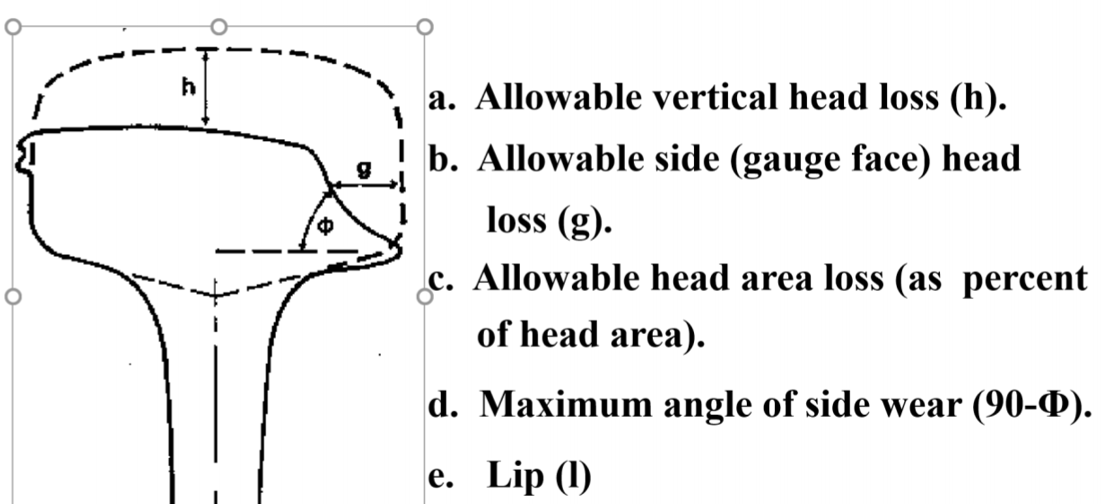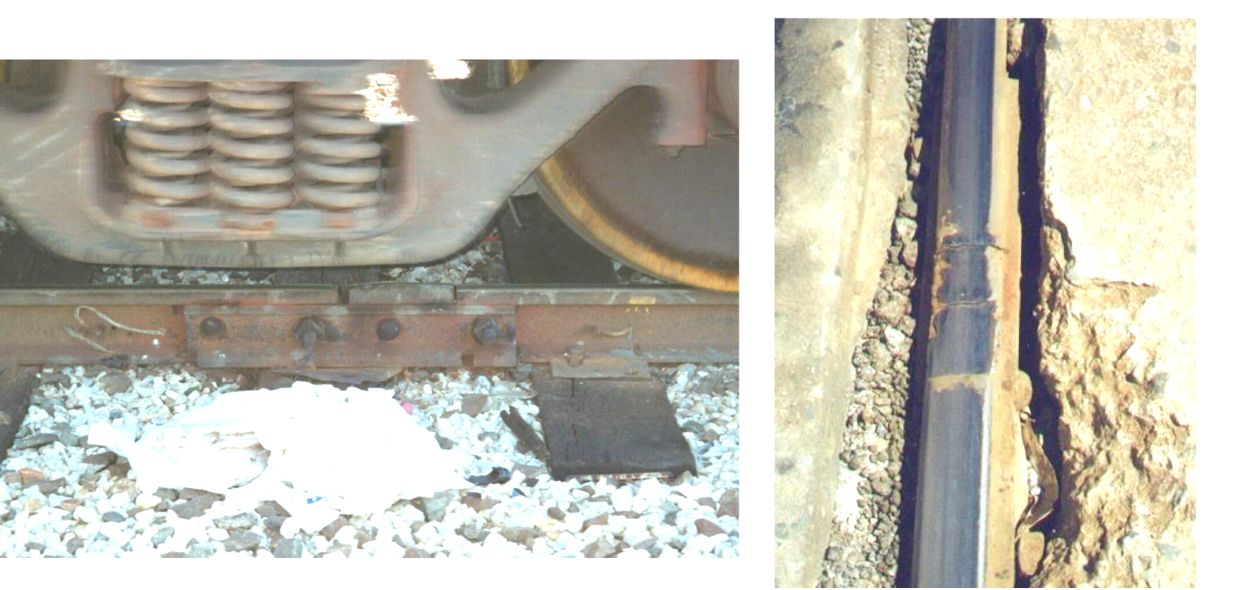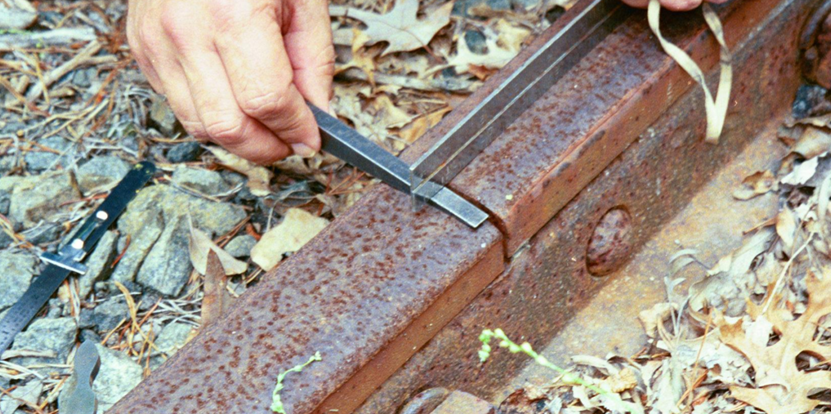Here are things the regulators don’t tell you about marshaling and storing freight cars.
Such as how to detect rail headwear. Most railroad executives would not know how to do this.

Jim Blaze rail accident investigation PowerPoint notes; 1999-2015
Bad things can and do occasionally happen in rail yards. Therefore, it is prudent risk management to consider these matters ahead of time.
Railroad yards owned by the big railroads are subject to inspections by trained and skilled Federal Railway Administration (FRA) safety inspectors.
Did you know that most privately owned industrial rail yards are not?
Did you know that railroad operations officers know that they “might” more often derail in a private rail yard during a switching move than they would back out on their own Class I lines and yards?
Most industrial track yard accidents are minor and are never officially reported to regulators or entered into the national FRA database. Yard accidents do not meet the threshold reporting criteria.
They do sometimes result in extreme damages – and occasionally there are deaths and high property damages in such yard accidents. Resolution of damages and control of the public image damages are then resolved in civil proceedings.
Therefore, please consider this commentary as a risk reminder. As a contractor or perhaps as a production plant manager overseeing an adjacent private rail yard, you face certain practical rail maintenance requirements.
Here is a market view that briefly suggests how you might address those issues and how to be the best you can be at performing that railway oversight role.
Be first in safety
You’re in charge of the plant rail safety. The title normally comes from your company.
So when you adopt your railyard security plan, don’t just have a general plan. The first rule is to have a plan that you as a non-railroader person understand – and that you feel comfortable enforcing from a technical perspective.
If you are going to do it, do it well. In fact, execute it as effectively as you can.
Here are simple safety tips to get you mentally into the task.
First rule? Everyone obeys the yard safety rules.
Example. A “No Hunting” posted signs means exactly that. Here is one failure to communicate. A recent safety audit discovered a man on top of one tank car using it as a deer stand. Turned out, he was the local sheriff.
Second suggestion – technically the track lessee is supposed to have the security plan. However, often the on-site railroad subcontractor your firm hires has the track and car switching expertise. Manufacturing is your “gig.” My recommendation is to share the risks via a technical collaboration.
Third, with modern heavy axle loadings, ensure that your yard track structure can withstand the weight of those 286,000-pound railcars moving over It.
Old, unsecured track structure (ballast + ties + fasteners + rails) might seem like an ideal place to store cars and generate revenue. However, there can be associated derailment risks to be mitigated.
Fourth, you’ll need to make regular tank car leak inspections – especially during large swings in ambient temperature.
For example, cars loaded in the winter that sit for months may leak in summer temperatures. Make sure this is covered in your subcontractor agreements.
Fifth, seal your cars.
Leakage can foul your track structure. Make hatches, protective housing covers, and bottom outlet valves a priority for daily to weekly inspection. Avoid the risk of tampering. These cars sitting alone on miles of yard track can be a hazardous nuisance. Limit that exposure risk.
Sixth, work with the railcar owners to do any railcar repairs while the cars are stored. It is cheaper that way since the railcars are assembled in one spot.
Cutting out cars for emergency repairs later just prior to a movement can cost you one to two added car yard switching charges. That might add up to $400 or more each time.
Taking care of the yard infrastructure
Beyond the railcar safety program, here are a few practical best practice tips from the engineering and accident investigation part of my rail career.
Training is especially critical. Do you have in-house inspectors and supervisors trained to recognize track problems when all the maintenance work is performed by outside contractors? If not, then train them, or outsource the job. The Class I railroads do this training on a regular basis.
The basic training deliverable is to make sure that the plant supervisor knows how to direct the local yard maintenance workforce for preventive maintenance work. Secondly, the inspectors must be able to recognize potential derailment sites before they become critical, and of course, the maintenance supervisor should be able to tell if the contractor is performing at an acceptable level.
After the training, track inspection is the first line of defense in yard maintenance.
While most of the track within the facility does not come under the jurisdiction of the FRA, it is recommended that FRA procedures be used as a safety net series of metric guidelines.
All active yard railroad track should be inspected once a month. That is not a best practice – it is a minimum requirement.
Here is what you are going to inspect.
Ballast and tie renewal are a starting point. You want to attack the track asset service life by managing normal wear and tear and replacing defective and/or failed ties.
As an example, assume a yard traffic movement level of about 1 million gross tons of traffic per year. As a rule of thumb, plan for about 100 tie renewals per year per mile of running track in your yard.
Drainage of surface water is a continuing yard challenge. Some yard locations might require the laying of filter fabric along with sections of perforated pipe within water retention yard areas.
When surfacing and replacing railroad ties, consider adding a 2-inch layer of fresh ballast. Crushed granite ballast is an excellent type. Ballast is cheap.
Track can become fouled by several things, including accidental commodity spills. That spill works its way into the ballast and causes “problems” that can be solved by maintenance practices.

Inspection photo at one industrial complex yard
(Photo: Jim Blaze)
Track geometry repair is another yard work task. What you want to maintain or improve is the track surface (called the track cross-level and profile). The technical term for maintenance or track renewal of geometry is resurfacing or tamping of the ballast and tie/rail structure.
Track gauge between the two steel rails is critical. You will be checking for the track gauge between the inner side of the two parallel steel rails. Wide gauge is often the most recurring problem in rail yards.
Where? You’ll often find the gauge problems in sections with road crossings, turnout tracks (switches), and in areas where ties and fasteners are deteriorated.
Steel rail maintenance requires both surface and internal checks. Internal rail flaw detection is not mandatory for private yard tracks. But it is a best safety practice.
Rail flaw detection and repair is one of those factors that makes you a best practice company.
Rail in the yards has often been cascaded down from mainline track use, to secondary branch line or passing track uses – and then into the yard tracks.
RARE but occasionally seen poor rail maintenance condition called a Dutchman’s rail condition. Not much holding the two-piece broken rail section in place.

Inspection photo at a Class I railroad site two decades ago.
(Photo: Jim Blaze)
Quite often, yard rail is pretty old. And perhaps of small weight and usable headwear size. But, with slow train movement speeds, it is still likely useful and safe.
Small-size rail – that means perhaps 100# RB rail sections – is also probably full of jointed rail instead of welded rail. That’s still okay for yard marshaling purposes.
Even steel eventually wears out from fatigue, wear, and environment.

Industrial track inspection in Delaware – 2007.
(Photo: Jim Blaze)
Turnouts/switches are the track work sections within a rail yard most likely to require special inspection attention – and repairs. Here is what to look for:
- Missing or broken bolts and cotter pins
- Misaligned switches and switch points on the turnout
- Broken or worn connecting rods
- Broken or cracked joint bars
- Misaligned rail ends and rail-end batter
Some yard limits extend well beyond what is normally considered the geographic gates of a Class I Railroad yard. This yard limits track that is actually part of a branch line serving a port market yard.
Big business in rail yards
Now that we covered best business practices, here is a closing remark as to why railroad private yards are an important business market.
Many of these yards are called by the market term SIT yards – storage in transit (SIT) rail yards are a special and growing business sector.
These SIT rail yards are privately owned and operated. They are found across the U.S. and Canadian network – and selectively in strategic market locations within Mexico.
Their role is to provide a ready-to-use railcar supply near clusters of manufacturing facilities. Examples of locations near SIT yards are the New Jersey “chemical coast” or the vast Louisiana to Texas Gulf petrochemical coast. That is the supply side yard pattern for SIT facilities.
On the market demand side, SIT rail yards are strategically placed downstream close to clusters of consignees/customers.
The use of SIT rail yards is a widespread and profitable business model sometimes described as offering rail freight customers the flexibility of “a bulk yet specialized commodity warehouse on wheels.”
Over time, a pretty well-defined pricing structure for railcar parking has developed. By subscription or private negotiations, one can digitally access prices by different regions and different yard space vendors to examine parking spot prices. Two pricing structures are typically offered. One is for empty railcars and the second is for railcars stored with commodities on board.
Pricing for railcar movements (switching and pulling) and separate maintenance services are also widely quoted in the marketplace. Rates are usually contracted for over a month to a longer time period.
If you need to store your railcars, one of the selection criteria reflects back to the safety and inspection image that’s important to your corporation. Do you buy cheap storage? Or are you more interested in the best practice providers?
The closing question is “How do you value best practice yard services?”